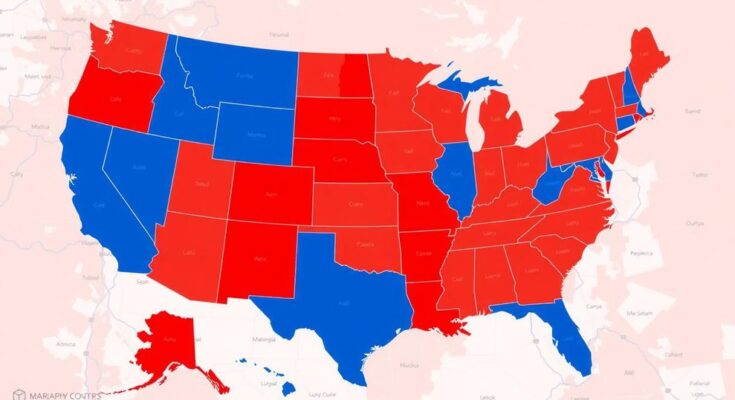The rise of ‘blowout counties’ is reshaping U.S. politics, highlighting stark party loyalties and a dramatic decline in swing counties. This shift has significant implications for electoral strategies ahead.
Understanding the Rise of Blowout Counties
Political divisions in the United States seem to be widening, with the emergence of what some are calling ‘blowout counties’. Recent data highlights that while the nation may seem evenly divided nationally, large areas are displaying strikingly partisan trends. More and more locations are seeing overwhelming loyalty to a single political party, effectively erasing competition at the local level. This trend has crucial implications for future elections, revealing a deeper layer of division across America.
Political Polarisation Grows Among Voters
Let’s talk about the raw numbers. In the early 2000s, many counties were won by Republicans with around a 20-point margin. Fast forward to today, and we’re seeing those margins jump to 50 points or more. An analysis from NBC News suggests that both demographic and geographical factors have played a significant role in these shifts. What we’re witnessing is a clustering of political opinions, which may make interactions between differing viewpoints increasingly rare. Have Americans stopped talking politics? Well, maybe it’s easier to do so these days, given how segregated views have become.
Republican Gains in Blowout County Wins
Look back to the 2000 election. George W. Bush may have had a narrow victory in the Electoral College, but he won an average of 17 points across all the nation’s counties. Fast forward two decades, and the political landscape has changed drastically. Donald Trump has actually increased the number of counties where Republicans see blowout wins. Areas that traditionally leaned Democratic, like Appalachia, have shifted toward the Republican side, while Democratic strongholds continue to flourish in urban settings. The stark contrast is palpable: Trump’s counties average about 10,000 voters compared to Kamala Harris’ sizeable blowout counties averaging around 210,000.
Swing Counties Decline as Party Loyalty Rises
Interestingly, while blowout counties have skyrocketed, swing counties have literally plummeted. Back in 2004, there were a whopping 227 counties that shifted party allegiance. Compare that to only 89 counties in the last election that switched sides. It looks like the political landscape is just solidifying, if not hardening, as time moves on. This became particularly evident in the dramatic shifts observed during elections like those in 2008 and 2016. Trump helped reverse a lot of territory back into the Republican fold, notably boosting his 89-county flips in 2020 over Biden’s 80 county flips from 2020. It’s a pivotal moment in understanding America’s shifting allegiances.
Changing Dynamics of Political Strategies
There’s an interesting turn in this evolving tale. Harris, who ran as a candidate in 2020, stands out as the first individual in the last two decades who didn’t manage to flip even one county compared to the previous election. It’s almost as if Harris’s absence in swinging counties speaks volumes about the growing political divides. As these shifts take root, the path forward for political strategies becomes increasingly crucial. Understanding these dynamics allows for a deeper comprehension of how working with new coalitions might start to shape the very definition of what it means to seek a successful election in the future.
The Future of Electoral Politics
Now, let’s digest this stark reality: the number of blowout counties has quadrupled since the late 1990s. The consequences are far-reaching, redefining how parties approach not just campaigning, but also governing. The rise of strong partisan loyalties means election strategies must evolve and adapt. Whereas once there were differing political opinions sparking debates, this scenario leads to a virtual echo chamber. As Americans grapple with this new landscape, questions arise—what is next for civic discourse? How can politicians reconnect with their constituents? Time will soon tell.
What we’re observing is a marked shift in party loyalty that can’t be ignored. The division is becoming more pronounced as blowout counties multiply and swing counties fade away. With political landscapes rapidly evolving, parties must rethink their strategies to reconnect with a populace that increasingly feels separate from differing opinions.




